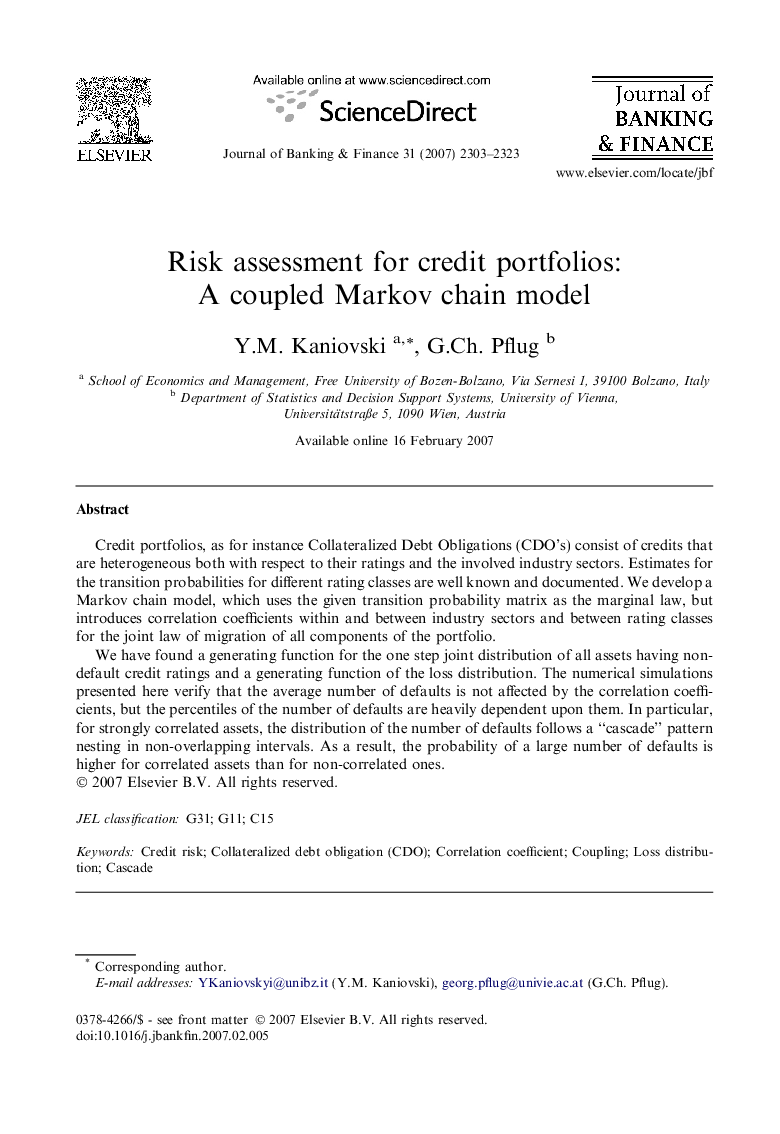| Article ID | Journal | Published Year | Pages | File Type |
|---|---|---|---|---|
| 5091079 | Journal of Banking & Finance | 2007 | 21 Pages |
Credit portfolios, as for instance Collateralized Debt Obligations (CDO's) consist of credits that are heterogeneous both with respect to their ratings and the involved industry sectors. Estimates for the transition probabilities for different rating classes are well known and documented. We develop a Markov chain model, which uses the given transition probability matrix as the marginal law, but introduces correlation coefficients within and between industry sectors and between rating classes for the joint law of migration of all components of the portfolio.We have found a generating function for the one step joint distribution of all assets having non-default credit ratings and a generating function of the loss distribution. The numerical simulations presented here verify that the average number of defaults is not affected by the correlation coefficients, but the percentiles of the number of defaults are heavily dependent upon them. In particular, for strongly correlated assets, the distribution of the number of defaults follows a “cascade” pattern nesting in non-overlapping intervals. As a result, the probability of a large number of defaults is higher for correlated assets than for non-correlated ones.
